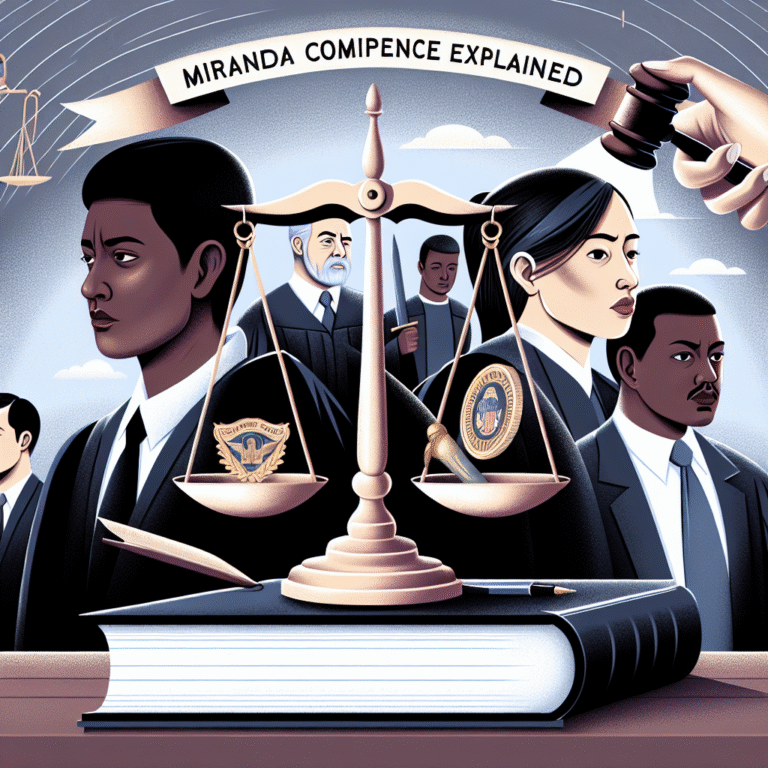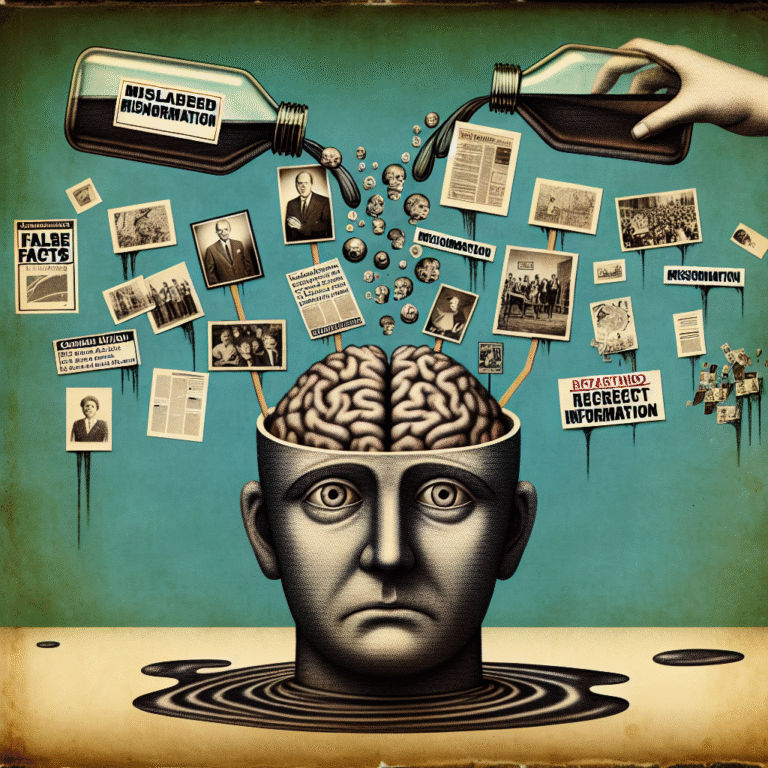Introduction
Imagine a crime scene—flashes of police lights illuminate the darkness, and investigators swarm with an urgency driven by the desire for justice. Within this atmosphere of chaos, a peculiar figure stands apart: the criminal profiler. Often portrayed in films and TV dramas as a near-superhuman detective, the profilers’ job is deeply grounded in psychology and strategy, not just instinct. Welcome to Mapping the Mind: Understanding Psychological Profiling in Criminal Cases, a critical examination of how psychological profiling transforms our approach to solving crimes.
Psychological profiling is not merely a tool; it’s a revolutionary approach that bridges the gap between psychology and criminal justice. This article delves into its importance, method, real-life applications, and even ethical considerations, taking readers on a journey toward understanding the complexities of the human mind.
The Psychological Profiling Paradigm
What is Psychological Profiling?
Psychological profiling, often referred to as criminal profiling, is the systematic approach of identifying behavioral traits, motives, and emotional patterns of individuals who commit crimes. By leveraging insights from psychology, criminology, and sociology, profilers create comprehensive personas of suspects, helping to narrow down investigations.
The Historical Context
To appreciate the significance of Mapping the Mind: Understanding Psychological Profiling in Criminal Cases, one must first understand its roots. The modern practice began in the late 1970s with the FBI’s Behavioral Science Unit. Pioneers like John Douglas and Robert Ressler paved the way for profiling techniques that have become fundamental to criminal investigations.
Profiling Techniques: How It Works
Step 1: Crime Scene Analysis
The first step in psychological profiling is examining the crime scene. This analysis aids profilers in discerning the nature of the crime, the victimology, and the potential motivations of the suspect.
Case Study: The Green River Killer
Gary Ridgway, infamously known as the Green River Killer, murdered numerous women in Washington State. Profilers studied the patterns in his crimes, noting factors such as the choice of victims and the underlying motivations, which led to his eventual arrest in 2001.
Step 2: Behavioral Analysis
Behavioral analysis involves dissecting the actions taken by the perpetrator during the crime. What method did they use? What tools were involved? Each decision offers critical insights into the suspect’s psyche.
Step 3: Victimology
Understanding the victim is crucial. Analyzing the victim’s background, lifestyle, and relationships often reveals connections to the offender.
Step 4: Drawing the Profile
With accumulated data, profilers create a psychological profile. This is not a definitive label but rather a dynamic, evolving insight into the suspect’s possible characteristics, including age, gender, and psychological state.
Table 1: The Psychological Profiling Process
| Step | Description |
|---|---|
| Crime Scene Analysis | Examine the crime location and circumstances |
| Behavioral Analysis | Analyze the suspect’s actions during the crime |
| Victimology | Understand the victim’s background |
| Profile Creation | Develop a psychological profile of the suspect |
Real-World Applications of Profiling
Success Stories in Profiling
It’s essential to recognize the successful application of psychological profiling in solving crimes. One of the most notable is the apprehension of the "Unabomber."
Case Study: The Unabomber
Ted Kaczynski, known as the Unabomber, meticulously executed a series of bombings over nearly two decades. Profilers analyzed his writing style and ideological motivations, which helped the FBI identify him from a manuscript he had published. This case exemplifies how Mapping the Mind: Understanding Psychological Profiling in Criminal Cases contributes significantly to law enforcement efforts.
The Role of Technology
In the digital age, profiling has evolved alongside technological advancements. Data analytics, machine learning, and artificial intelligence are now integrated into profiling techniques, streamlining the identification of potential suspects and patterns.
Ethical Considerations in Psychological Profiling
While psychological profiling holds immense potential, it also raises ethical concerns. Profilers must navigate biases, as profiling could lead to wrongful accusations based on demographic parameters.
The Importance of Responsible Profiling
Responsible profiling involves a delicate balance between utilizing psychological insights and ensuring that profiling methods do not lead to discrimination. Investigators must rely on empirical data, behavioral patterns, and situational context to shape their profiles rather than fall into traps of stereotype or assumption.
Challenges in Psychological Profiling
Ambiguity and Misinterpretation
One of the most significant challenges in psychological profiling is the inherent ambiguity in human behavior. The same set of actions can emerge from vastly different motivations. For instance, a burglary could stem from economic need or thrill-seeking.
The Danger of Over-Reliance on Profiling
While psychological profiling is an invaluable tool, investigators must not become overly reliant on it. Profiling should complement traditional investigative methods, not replace them.
The Future of Psychological Profiling
As psychology and criminology continue to evolve, so too will the methodologies utilized in profiling. Increased incorporation of neuroscience and psychological assessments—aimed at understanding the mental health of both victims and perpetrators—will enhance future profiling practices.
The Role of Education
Training new generations of profilers is vital. Courses that integrate psychology with law enforcement tactics will be crucial in refining these techniques, ensuring future cases are approached with both sophistication and ethical responsibility.
Table 2: Future Directions in Psychological Profiling
| Area | Expected Developments |
|---|---|
| Neuroscience | Greater integration in understanding criminal behavior |
| Ethical Practices | Improved guidelines to reduce bias |
| Educational Programs | Enhanced training for future profilers |
Conclusion
Mapping the Mind: Understanding Psychological Profiling in Criminal Cases is not merely an academic exercise; it is a potent tool that can unravel the complexities of human behavior in criminal contexts. Profilers today stand on the shoulders of giants, employing innovative techniques to help police departments deliver justice efficiently.
As we look ahead, the marriage of psychology, technology, and ethical practice will not only guide successful apprehensions but also inspire a society where crime can be preemptively understood, not just reacted to. Takeaway: Understanding the psychological nuances of crime deepens our insights into our humanity—and our responsibility as a society to prevent and seek justice.
FAQs about Psychological Profiling
What is psychological profiling?
Psychological profiling involves creating profiles of potential suspects based on behavioral crime analysis, victimology, and other psychological insights.How is psychological profiling used in criminal cases?
Profilers analyze crime scenes, victim backgrounds, and behavioral patterns to generate insights that assist law enforcement in identifying suspects.Are there any ethical concerns regarding psychological profiling?
Yes, ethical concerns include potential biases against certain demographics, which can lead to wrongful accusations.Can technology improve psychological profiling?
Absolutely. Data analytics and artificial intelligence can enhance profiling techniques by identifying patterns and connections more efficiently.- How can one become a criminal profiler?
Typically, a background in psychology or criminology, alongside specialized training programs, is necessary to become a skilled criminal profiler.
In closing, as we continue to explore the depths of human psychology, we find that understanding criminal behavior enriches our comprehension of humanity itself, and profiling becomes not just a tool but a testament to our quest for justice.

















